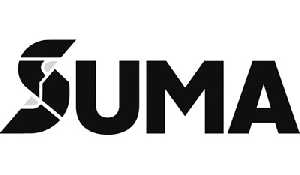Changes to Canada Emergency Wage Subsidy
CEWS will continue to December 19
July 18, 2020, 11:22 am


Changes were announced Friday to the Canada Emergency Wage Subsidy, which will continue until December 19.
Since its launch, about 3 million Canadian employees have had their jobs supported through the CEWS.
Today the Finance Minister, Bill Morneau, announced proposed changes to the CEWS that would broaden the reach of the program.
Today’s proposed changes included in the Government’s draft legislative proposals would:
Allow the extension of the CEWS until December 19, 2020, including redesigned program details until November 21, 2020.
Make the subsidy accessible to a broader range of employers by including employers with a revenue decline of less than 30 per cent and providing a gradually decreasing base subsidy to all qualifying employers.
This would help many struggling employers with less than a 30-per-cent revenue loss get support to keep and bring back workers, while also ensuring those who have previously benefited could still qualify, even if their revenues recover and no longer meet the 30 per cent revenue decline threshold.
Introduce a top-up subsidy of up to an additional 25 per cent for employers that have been most adversely affected by the pandemic. This would be particularly helpful to employers in industries that are recovering more slowly.
Provide certainty to employers that have already made business decisions for July and August by ensuring they would not receive a subsidy rate lower than they would have had under the previous rules.
Address certain technical issues identified by stakeholders.
These proposed changes follow consultations with business and labour representatives on potential adjustments to the CEWS program aimed at ensuring that it continues to protect jobs and promote growth.
By helping workers transition back to their jobs and supporting businesses as they increase revenues, these changes would ensure that employers have the certainty they need to hire back quickly as the economy improves and to best position workers and businesses for the future.
The government continues to assess and respond to the impacts of COVID-19 and stands ready to take additional actions as needed to stabilize the economy.
“We are ensuring that Canadians are able to get back to work as quickly as possible," said Morneau. "The adjustments we are proposing would ensure that the CEWS continues to address Canadians’ needs while also positioning them for growth as economies continue to gradually and safely reopen.”
In order to implement the measures included in today’s announcement, the Government of Canada intends to introduce legislation to be considered by Parliament, and has shared draft legislative proposals.
The government introduced the CEWS, as part of its COVID-19 Economic Response Plan, in order to prevent further job losses, encourage employers to rehire workers previously laid off as a result of COVID-19, and help better position Canadian companies and other employers to more easily resume normal operations following the crisis.
The CEWS was put in place for an initial 12-week period from March 15 to June 6, 2020, providing a 75-per-cent wage subsidy to eligible employers. On May 15, the Finance Minister, Bill Morneau, announced that the Government of Canada would extend the CEWS by an additional 12 weeks to August 29, 2020. Today’s proposed changes would further extend the program until November 21, 2020, with the intent to provide further support until December 19, 2020.
CFIB welcomes announcement
The Canadian Federation of Independent Business (CFIB) is pleased the government has finally released details of what the Canada Emergency Wage Subsidy (CEWS) will look like for the summer and fall of this year.
"Assuming the legislation passes, small businesses will be able to make their staffing plans for the rest of the year with a better understanding of how much government support will be there depending on their sales. Extending the subsidy and providing firm details are critical parts of getting Canadians back to work," said Dan Kelly of the CFIB.
"CFIB welcomes the change that will extend eligibility for the wage subsidy to all businesses with any level of revenue loss over the months ahead. The “all or nothing” approach cut out many firms that were not able to predict their sales levels or had revenue losses under the 30 per cent threshold. Many more small firms will now be eligible for a smaller subsidy which will allow them to be more confident in making hiring decisions while their revenues remain uncertain."
Kelly said the complicated nature of the program could be a problem.
"The new rules are incredibly complicated and small business owners will need significant help in understanding whether they will qualify and how much support they may receive," he said. "There are top-ups for those with revenue losses greater than 50 per cent and “safe harbour” rules for those who would otherwise get a smaller subsidy in July and August. Over one third of CFIB members report their sales are less than half of normal levels. Many of these decisions make good sense, but a detailed analysis is required to fully understand all of the implications. CFIB is committed to working with the federal government to help communicate the new rules to small business owners and provide advice on any necessary changes."
He said more changes are needed
"CFIB urges the federal government to make quick progress to reform other key business support programs, including proceeding with promised changes to eligibility for the Canada Emergency Business Account, and expanding the size of the loans and the percentage forgiven upon repayment," said Kelly. "It is also critical that we make immediate changes to the Canada Emergency Commercial Rent Assistance program as it is just not working for most small business owners. Getting support directly to tenants and rethinking the 70 per cent revenue drop test are top priorities for small business."
"Small firms look forward to the day that subsidies can be replaced by sales. But over half of small firms report it will take them six months or more to return to normal revenue levels. While today’s announcement will help smooth this transition for many, quick action on retooling all programs to aid during the recovery is urgently needed."
CEWS details
The CEWS was put in place for an initial 12-week period from March 15 to June 6, 2020, providing a 75-per-cent wage subsidy to eligible employers. On May 15, 2020 Finance Minister Bill Morneau announced that the Government of Canada would extend the CEWS by an additional 12 weeks to August 29, 2020.
This announcement was part of a public consultation the government undertook to ensure the CEWS was best positioned to help get Canadians hired back quickly as provincial and territorial economies begin to reopen.
The government announced on June 10, 2020 that the same eligibility criteria for the initial three 4-week periods (March 15 to June 6, 2020) would continue to apply for Period 4 (June 7 to July 4, 2020).
The government is proposing a further extension of the CEWS, until December 19, 2020, providing proposed program details until November 21, 2020, and has shared draft legislative proposals.
These proposals would adapt the CEWS to support more workers and businesses, better protect jobs and promote growth, and effectively respond as the economy continues to reopen.
The draft legislative proposals would also give the government some flexibility to ensure the wage subsidy can adjust to the needs of businesses if economic conditions change. The estimated total fiscal cost in 2020-21 for the CEWS program announced Friday is $83.6 billion.
Two parts
Effective July 5, 2020, the CEWS would consist of two parts:
a base subsidy available to all eligible employers that are experiencing a decline in revenues, with the subsidy amount varying depending on the scale of revenue decline; and
a top-up subsidy of up to an additional 25 per cent for those employers that have been most adversely affected by the COVID-19 crisis.
The two-part CEWS would apply with respect to the remuneration of active employees. A separate CEWS rate structure would apply to furloughed employees.
In addition, a safe harbour would be available to ensure that, through August 29 (periods 5 and 6), employers would have access to a CEWS rate that is at least as generous as they would have had under the initial CEWS structure, as described further below (see Safe harbour rule for Periods 5 and 6).
Base subsidy for all employers impacted by the crisis
Effective July 5, 2020 (i.e., Period 5 and subsequent periods), employers that have been affected by the COVID-19 crisis would be eligible for a base CEWS amount for active employees.
This base CEWS would be a specified rate, applied to the amount of remuneration paid to the employee for the eligibility period, on remuneration of up to $1,129 per week.
The rate of the base CEWS would now vary depending on the level of revenue decline, and its application would be extended to employers with a revenue decline of less than 30 per cent. This expansion would mean that all eligible employers with a revenue decline would now qualify for CEWS support.
The specified rate would be determined based on the change in an eligible employer's monthly revenues.
The maximum base CEWS rate would be provided to employers with a revenue drop of 50 per cent or more. Employers with a revenue drop of less than 50 per cent would be eligible for a lower base CEWS rate, as shown in Table 1.
The decline in the base CEWS rate between a 50-per-cent revenue drop and zero provides a smooth phase-out so that businesses can grow and rehire without worrying about a sharp drop in support as economic activity returns.
The maximum base CEWS rate would be gradually reduced from 60 per cent in Periods 5 and 6 (July 5 to August 29) to 20 per cent in Period 9 (October 25 to November 21).
Top-up subsidy for the most adversely affected employers
A top-up CEWS of up to 25 per cent would be available to employers that were the most adversely impacted by the pandemic.
Generally, an eligible employer’s top-up CEWS would be determined based on the revenue drop experienced when comparing revenues in the preceding 3 months to the same months in the prior year. Under the alternative approach to the calculation of baseline revenues, an eligible employer’s top-up CEWS would be determined based on the revenue drop experienced when comparing average monthly revenue in the preceding 3 months to the average monthly revenue in January and February 2020.
For example, if an employer had $600,000 in revenue between April 1 and June 30, 2019, and $210,000 in revenue between April 1 and June 30, 2020, the employer would have a 3-month revenue drop of 65 per cent.
Under the alternative approach, if an employer had $400,000 in revenue between January 1 and February 29, 2020 (average monthly revenue of $200,000), and $210,000 in revenue between April 1 and June 30, 2020 (average monthly revenue of $70,000), the employer would have a 3-month revenue drop of 65 per cent.
Employers that have experienced a 3-month average revenue drop of more than 50 per cent would receive a top-up CEWS rate equal to 1.25 times the average revenue drop that exceeds 50 per cent, up to a maximum top-up CEWS rate of 25 per cent, which is attained at a 70‑per‑cent revenue decline. As with the base CEWS rate, the top-up CEWS rate would apply to remuneration of up to $1,129 per week.
Safe harbour rule for Periods 5 and 6
For Periods 5 and 6, an eligible employer would be entitled to a CEWS rate not lower than the rate that they would be entitled to if their entitlement were calculated under the CEWS rules that were in place for Periods 1 to 4.
This means that in Periods 5 and 6, an eligible employer with a revenue decline of 30 per cent or more in the relevant reference period would receive a CEWS rate of at least 75 per cent or potentially an even higher CEWS rate using the new rules outlined above for the most adversely affected employers (up to 85 per cent).
CEWS for Furloughed Employees
For Periods 5 and 6, the subsidy calculation for a furloughed employee would remain the same as for Periods 1 to 4. It would be the greater of:
For arm’s-length employees, 75 per cent of the amount of remuneration paid, up to a maximum benefit of $847 per week; and
75 per cent of the employee’s pre-crisis weekly remuneration up to a maximum benefit of $847 per week or the amount of remuneration paid, whichever is less.
Beginning in Period 7, CEWS support for furloughed employees would be adjusted to align with the benefits provided through the Canada Emergency Response Benefit (CERB) and/or Employment Insurance (EI). This would ensure equitable treatment of employees on furlough between both programs, provide greater clarity to workers as to their compensation as compared to a changing subsidy rate based on their employer’s revenue in a given month and, when combined with draftlegislative changes to the interaction with the CERB (i.e., the elimination of the 14-days rule, as discussed below), make it easier to transition employees on to CEWS so that they are reconnected with their employer.
For Period 5 and subsequent periods, the CEWS for furloughed employees would be available to eligible employers that qualify for either the base rate or the top-up for active employees in the relevant period.
The employer portion of contributions in respect of the Canada Pension Plan and Employment Insurance for furloughed employees would continue to be refunded to the employer.
Eligible Remuneration
No changes are proposed to the definition of eligible remuneration. Eligible remuneration may include salary, wages, and other remuneration like taxable benefits. These are amounts for which employers would generally be required to withhold or deduct amounts to remit to the Receiver General on account of the employee's income tax obligation. However, it does not include severance pay, or items such as stock option benefits or the personal use of a corporate vehicle.
For active arm’s-length employees, the amount of remuneration would be based solely on actual remuneration paid for the eligibility period, without reference to the pre-crisis remuneration concept used for earlier CEWS periods, which is explained in the Finance Canada backgrounder of April 11, 2020. A modified special rule would apply to active employees that do not deal at arm's length with the employer. For Period 5 and subsequent periods, the wage subsidy for such employees would be based on the employee’s weekly eligible remuneration or pre-crisis remuneration, whichever is less, up to a maximum of $1,129. The subsidy would only be available in respect of non-arm's-length employees that were employed prior to March 16, 2020.
For Period 4, the pre-crisis remuneration of an employee would be based on the average weekly remuneration paid to the employee from January 1 to March 15, 2020; from March 1, 2019 to May 31, 2019; or from March 1, 2019 to June 30, 2019. For Period 5 and subsequent periods, the pre-crisis remuneration of an employee would be based on the average weekly remuneration paid to the employee from January 1 to March 15, 2020 or from July 1, 2019 to December 31, 2019. In all cases, the calculation of average weekly remuneration would exclude any period of 7 or more consecutive days without remuneration. Employers can choose which period to use on an employee-by-employee basis.
Eligible Employers and Employees
Eligible employers include individuals, taxable corporations and trusts, partnerships consisting of eligible employers, non‑profit organizations and registered charities. Public institutions are generally not eligible for the subsidy. As announced on May 15, 2020, eligible employers also include the following groups:
Partnerships that are up to 50-per-cent owned by non-eligible members;
Indigenous government-owned corporations that are carrying on a business, as well as partnerships where the partners are Indigenous governments and eligible employers;
Registered Canadian Amateur Athletic Associations;
Registered Journalism Organizations; and
Non-public colleges and schools, including institutions that offer specialized services, such as arts schools, driving schools, language schools or flight schools.
An eligible employee is an individual who is employed in Canada. Effective July 5, 2020, the eligibility criteria would no longer exclude employees that are without remuneration in respect of 14 or more consecutive days in an eligibility period.
Calculating Revenues
An employer's revenue for the purposes of the CEWS is its revenue in Canada earned from arm's-length sources. Revenues from extraordinary items and amounts on account of capital are excluded.
For registered charities and non-profit organizations, the calculation includes most forms of revenue, excluding revenues from non-arm's length persons. These organizations are allowed to choose whether to include revenue from government sources as part of the calculation. Once chosen, the same approach would have to apply throughout the program period.
Special rules for the computation of revenue are provided to take into account certain non-arm's-length transactions, such as where an employer sells all of its output to a related company that in turn earns arm's-length revenue. As well, affiliated groups are able to elect to compute revenue on a consolidated basis.
Reference Periods for the Drop-in-Revenues Test
For the purpose of the base CEWS, eligibility would generally be determined by the change in an eligible employer's monthly revenues, year-over-year, for the applicable calendar month.
For Period 5 and all subsequent periods, an eligible employer would be able to use the greater of its percentage revenue decline in the current period and that in the previous period for the purpose of determining its qualification for the base CEWS and its base CEWS rate in the current period. This would pbe a continuation of the rules for Periods 1 to 4 that allowed an employer that met the revenue test in one period to automatically qualify for the following period.
Employers that have elected to use the alternative approach for the first 4 periods would be able to either maintain that election for Period 5 and onward or revert to the general approach. Similarly, employers that have used the general approach for the first 4 periods would be able to either continue with the general approach or elect to use the alternative approach for Period 5 and onward. Whichever approach they choose would apply for Period 5 and onward and would apply to the calculation of the base CEWS and the top-up CEWS.
The government has shared draft legislative proposals to make these changes to the CEWS. These proposed changes, which would generally apply as of March 15, 2020, include:
providing an appeal process based on the existing procedure for notices of determination that allows for an appeal to the Tax Court of Canada;
providing continuity rules for the calculation of an employer’s drop in revenues in certain circumstances where the employer purchased all or substantially all the assets used in carrying on business by the seller;
allowing prescribed organizations that are registered charities or non-profit organizations to choose whether to include government-source revenue for the purpose of computing their reductions in qualifying revenue; and
allowing entities that use the cash method of accounting to elect to use accrual based accounting to compute their revenues for the purpose of the CEWS.
The government is also proposing to move forward with previously released legislative changes, including relieving changes for calculating pre-crisis “baseline” remuneration, for corporations that have amalgamated and for eligible entities that use payroll service providers.
The government is also proposing to move forward with the amendment that would align the treatment of trusts and corporations for the purposes of the CEWS.
Examples of how redesigned CEWS would work
Example: Hard hit employer eligible for an 85-per-cent combined subsidy rate
Joanne and Hal run a sporting goods store in Fredericton, New Brunswick. They have 10 full‑time employees, each earning $800 per week for a total weekly payroll of $8,000. Joanne and Hal closed their store on March 15, and reopened for curbside pick-up May 1. With the help of the CEWS, they have kept half of their employees on the payroll, paying them their full regular wages. Over the first 16 weeks of the CEWS, they benefitted from the 75-per-cent wage subsidy and they received $48,000 in CEWS support. In July, with the economy reopening, they intend to rehire all of their employees and have them return to their pre-crisis schedule. As revenues were down over 50 per cent year-over-year in June, they would qualify for the maximum base CEWS rate of 60 per cent in Period 5. In addition, because their revenues from April to June 2020 were down over 70 per cent when compared to April to June 2019, they would be eligible for the 25-per-cent CEWS top-up, increasing their combined subsidy rate to 85 per cent. This would translate into $27,200 in CEWS support in Period 5, to help them pay their employees’ salaries.
Example: Employer that becomes eligible for the CEWS as a result of the removal of the 30-per-cent revenue decline threshold
Shelf Life Foods is a mid-size frozen food manufacturer in Kingston, Ontario. It has 200 full‑time employees, each earning $1,000 per week for a total monthly payroll of $800,000. Most of its pre-crisis sales were to supermarkets and have kept steady since the crisis began but the drop in its sales to restaurants during the crisis have contributed to reducing its overall revenues by 15 per cent each month. Because the revenue drop the company experienced was less than the 30-per-cent threshold over the first 16 weeks of the CEWS, the company did not qualify for the CEWS. Deciding that it could not operate at a loss much longer, the company was preparing to reduce staff hours by 15 per cent, or $120,000 per month. With the new design of the CEWS, however, the company, with a 15 per cent revenue drop, would qualify for the base CEWS in Period 5, starting on July 5, 2020, and Period 6, starting on August 2, 2020. In Periods 5 and 6, it would receive a subsidy of 18 per cent of its wages, equivalent to $144,000 for each period. Because it would qualify for the CEWS, the company decides it would not have to reduce staff hours.
Example: Employer who becomes eligible for the CEWS as a result of extension to users of payroll services
Maude runs a non-profit organization in Vancouver, providing services to youth in her community. In addition to volunteers, she hires part-time students to help organize these services. Her revenues dropped significantly because of the overall economic decline but, because she makes use of a centralized payroll service available to such non-profit organizations in her province and did not obtain her own payroll program account with the CRA, she could not qualify for the CEWS. Now, with the change of rules regarding the use of payroll service providers, her organization would qualify for the CEWS and be able to claim benefits retroactive to March 15, 2020.
Example: Recovering employer that is assured of continued support from future CEWS benefits
Maya and her brother Petr run a linen cleaning services business north of Montreal. Their cleaning services for hotels and inns have been shut down temporarily, but they managed to keep most of their other commercial linen cleaning services active. Throughout the crisis, they have been able to maintain 10 full-time employees, each being paid $800 per week for a total weekly payroll of $8,000. Over the preceding three months, revenues were down 50 per cent compared to the same period last year. During Periods 1 through 4, they qualified for the maximum subsidy rate of 75 per cent. Customers are gradually returning and they are considering seeking new lines of business. In June, their revenues are down 35 per cent. This means that, under the new CEWS rules, they would qualify for a base CEWS rate of 42 per cent in Period 5. However, with the safe harbour rule, they would be eligible for a rate of 75 per cent in Period 5—the rate they would have qualified for under the original CEWS rules. This would provide Maya and Petr a total subsidy amount of $24,000 in Period 5. In July, they have secured a new client, and revenues in July and August would be down 25 per cent from last year. With the elimination of the 30-per-cent revenue test, they would now be eligible for a CEWS rate of 30 per cent in Period 6. The extension and expansion of the CEWS would provide them with additional financial support as they rebuild their business.



































